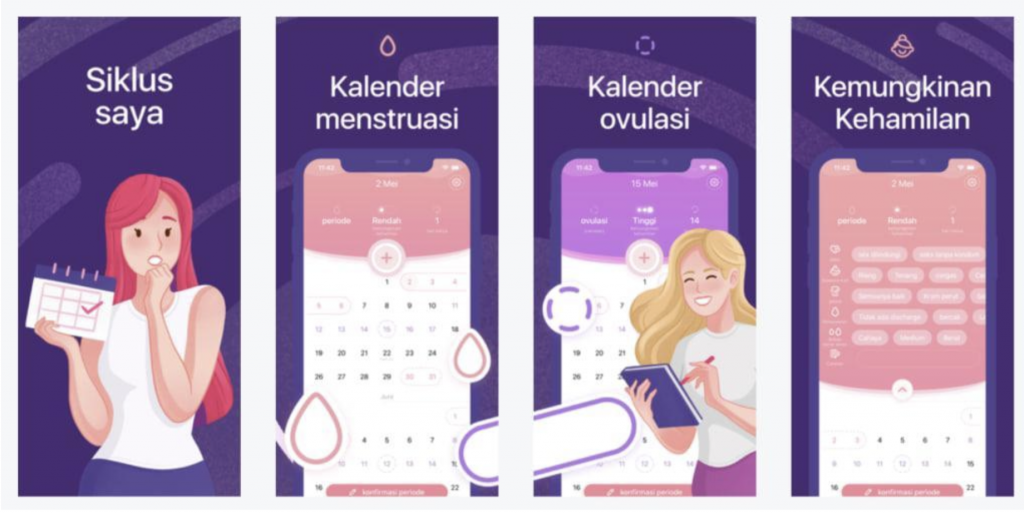With the New Year fast approaching, the mobile industry is actively discussing key trends that will determine app success in the near future. Shifting user preferences, growing competition, and the fast pace of technological change require developers and marketers to stay flexible and respond quickly. As competition grows and user behavior and technology evolve at an increasing pace, success depends on the ability to attract, retain, and engage users effectively.
Alexander Vereshchagin, ASO Lead at Angle Agency, explored key trends that will help app developers adapt to market challenges and stay competitive. These trends cover areas like personalization, localization, video content, and the adoption of artificial intelligence. Together, these trends shape a strategy helping create apps that meet the requirements of the modern market and user expectations.
More competition
The number of apps on the App Store and Google Play is growing at an explosive rate. According to public data, up to 1,000 new apps are added to the App Store daily, while Google Play sees around 3,300 new apps each day.
Competition is particularly intense in highly competitive markets like finance, health, and fitness. In these categories, capturing user attention becomes increasingly challenging as top positions are dominated by established brands. For example, an app can secure a spot in the top 10 solely through branded searches. At the same time, a lesser-known app with a well-structured ASO strategy might still fail to break into the top 20 without a comprehensive approach.
Why is competition increasing?
- Ease of development: Advancements in technology — along with accessible training and app-building platforms — are making it easier than ever to get started. This is especially true for no-code solutions that allow you to create apps without programming skills.
- Global market: More and more developers are trying to enter international markets, which creates additional pressure on local segments.
- Dominant top charts: Popular categories are often ruled by major players who have already bolstered their strong positions. Breaking into the top requires a truly unique offering beyond app promotion.
How to succeed in an increasingly competitive market?
1.Effective ASO
To stand out among thousands of apps, both text and visual optimization need to be conducted with a rigorous marketing approach. Your app should use clear, relatable language and offer solutions tailored to the user’s specific needs.
2. Synergy between ASO and ASA
ASO (App Store Optimization) and ASA (Apple Search Ads) can work hand in hand. ASO improves an app’s organic visibility, reducing user acquisition costs through ASA. At the same time, ASA campaigns provide quick results and insights that can be used to further optimize metadata.
An important note: the higher your app page’s conversion rate through ASO, the lower your cost per install via ASA.
3. Focus on unique advantages
In a competitive market, it’s crucial to clearly showcase your app’s unique selling points (USPs). Users should immediately understand:
What problem does your app solve?
- How is it better than the competition?
- What features make it stand out from similar apps?
4. Competitor analysis
Successful promotion is only possible if you analyze your competitors’ keywords and strategies. AI technologies can identify weaknesses in their optimization, giving you opportunities for growth.
5. Maintaining product quality
No amount of optimization can make up for a product that falls short of user expectations. Your app needs to run quickly and reliably, address user needs effectively, and offer an intuitive user interface.
Increasing competition is a challenge for all developers, but it’s one you can overcome with a well-rounded approach to promotion. Smart ASO, effective ASA support, competitor analysis, and a marketing-based focus on unique benefits can help your app stand out among thousands of others. At Angle Agency, we don’t just help apps reach the top — we help them stay there.
Personalization
With competition growing rapidly, personalization has become an essential part of mobile app marketing. Users now expect an individual approach at every stage — from discovering an app to installing and using it.
Personalization allows you to adapt content, app store pages, and visuals to different audiences, their needs, and their search intent. This approach boosts conversions and helps retain users over time.
Custom Store Listings (CSL): How does it work?
One of the most effective personalization tools on Google Play is Custom Store Listings (CSL). This feature allows you to create up to 50 alternative app pages, each tailored to specific search queries or target audiences.
CSL ensures that users see exactly what they’re looking for, rather than a generic app page. This boosts relevance, builds trust, and ultimately drives higher conversion rates for installs.
CSL success stories
- OLX
The OLX platform is a great example of a multifunctional app that can be adapted to different audience segments using CSL:
- Real estate seekers might see a page titled “OLX: Real Estate” with visuals of apartments, houses, and rental options.
- Car enthusiasts would be shown a page called “OLX: Cars” featuring relevant keywords and screenshots focused on the auto category.
This approach ensures that each audience segment immediately understands how the app can meet their specific needs.
- Uber
Uber’s approach clearly shows how personalization can promote different features within the same app:
- Users looking for a taxi will see a CSL focused on ride features: easy booking, pricing, and travel comfort.
- Those searching for food delivery will land on a page with visuals and text highlighting the Uber Eats service.
The result? Uber effectively markets multiple services within one app, adjusting pages to specific queries and user needs.
What does personalization with CSL include?
At Angle Agency, we offer a full-service solution for developing Custom Store Listings, covering every step needed for maximum optimization and personalization.
Steps we take:
- Niche analysis — Researching trends, audience behavior, and successful case studies in your category.
- Competitor analysis — Examining popular keywords, metadata, and visuals that drive the most traffic.
- Semantic core development — Selecting the most relevant and high-traffic keywords for your app.
- Search query clustering — Grouping keywords by query types and target audiences.
- Text optimization — Crafting titles and descriptions for each keyword cluster with ASO in mind.
- Visual adaptation — Designing personalized icons and screenshots tailored to user search intent.
Why is personalization important for driving conversions?
- Individual approach: App pages are customized for different audiences and search queries. For example, users searching for “games for girls” might see screenshots featuring princesses, while “games for boys” might lead to visuals with cars
- Increased relevance: When users see a page that directly matches their search, they are far more likely to install the app
- Metadata optimization: Text elements like titles, descriptions, and keywords are adapted to specific audience clusters
- A/B testing: Testing different pages helps identify which queries and design elements perform best
- Competitive advantage: Since CSL is still a relatively new tool, early adopters gain a significant advantage over competitors
Personalization as a strategic growth tool
Personalization in app promotion allows you to:
- Target your audience more precisely by creating pages tailored to specific queries
- Lower the cost per install through higher conversion rates
- Capture user attention by showcasing your app’s benefits from the very first moment
CSL enables companies to scale their promotion efforts, test hypotheses, and build tailored strategies for each audience segment.
Why you should start personalizing now
The personalization trend has already transformed the way apps are promoted. Companies that are quick to adapt their Google Play pages to user queries gain:
• Higher conversion rates and reduced ad costs.
• Improved rankings due to more relevant pages.
• More competitive position in the market.
Apps that don’t adopt personalization risk being overtaken by competitors who adapt more quickly to this new reality. Custom Store Listings are the future of app promotion, and now is the time to implement them.
The examples of OLX and Uber show how personalization helps promote multifunctional apps, while Custom Store Listings unlock new opportunities for precise user engagement. The team at Angle Agency is ready to create effective CSL pages for your app, making it as appealing and relevant to your audience as possible.



 Viktoriia Ronina
Viktoriia Ronina


 Sofia Savchenko
Sofia Savchenko